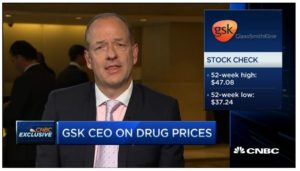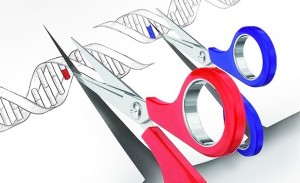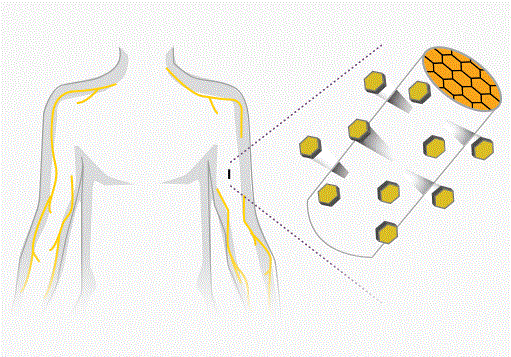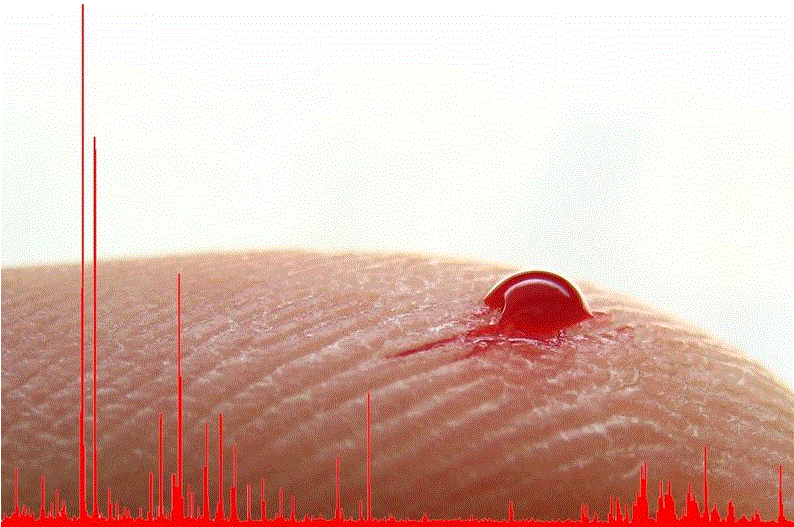- GSK CEO: Big pharma should keep investing in R&D (cnbc.com)
GlaxoSmithKline CEO Andrew Witty attributes the company's success to sticking to the tried-and-true business model of investing in research and development and not transitioning to an acquisition model...the key is to be patient and to see the value of investing in innovation...What we have to stay focused on is the fundamentals of the value of innovation and discovery of medicines and vaccines that make a real difference to patients...The alternative acquisition model in the health care industry has drawn criticism during this election year. In theory, the M&A strategy can save companies significant sums as they can purchase mature, fully developed products without having to invest in R&D...
- MSC, SinfoníaRx team to bring patients on-demand pharmacist access (drugstorenews.com)
A new partnership between savings program company Medical Security Card’s ScriptSave WellRx app and medication management company SinfoníaRx will bring on-demand pharmacist access to users of the savings program app...ScriptSave WellRx app users can use a click-to-call feature that will connect them to one of SinfoníaRx’s on-call pharmacist, who will answer patients’ questions about their prescriptions, medication interactions and OTC drugs...Our ability to help patients by leveraging the latest technology makes this partnership with MSC a natural fit...Our companies share the same goal — to ensure patients follow their prescribed medication regimens to achieve better health outcomes. The ScriptSave WellRx app also gives patients the ability to reduce their out-of-pocket drug costs, which can be a huge barrier to medication adherence and improved health...SinfoníaRx's pharmacists bring an important component to ScriptSave WellRx, offering medication information to our members if they have a question about drug interaction, dosage or alternatives...
- Scientists unveil the ‘most clever CRISPR gadget’ so far (statnews.com)
For all the hoopla about CRISPR (clustered regularly-interspaced short palindromic repeats), the revolutionary genome-editing technology has a dirty little secret: it’s a very messy business. Scientists basically whack the famed double helix with a molecular machete, often triggering the cell’s DNA repair machinery to make all sorts of unwanted changes to the genome beyond what they intended...On Wednesday, researchers unveiled in Nature a significant improvement — a new CRISPR system that can switch single letters of the genome cleanly and efficiently, in a way that they say could reliably repair many disease-causing mutations...Because of "the cell’s desperate attempts" to mend its genome..."what often passes as ‘genome editing’ would more appropriately be called ‘genome vandalism,’" as the cell inserts and deletes random bits of DNA where CRISPR cuts it...Because the new version of CRISPR avoids that mess, it "offers a huge step forward,"...
- CRISPR Dispute Raises Bigger Patent Issues That We’re Not Talking About (realclearhealth.com)
The worlds of science, technology and patent law eagerly await the...government’s decision on who deserves patents on what many have referred to as the biotechnology invention of the century: the CRISPR/Cas9 gene-editing technique...Scientists hail CRISPR/Cas9 as more accurate and efficient than other, now-traditional genetic engineering methods...CRISPR has generated worldwide debate about how it could accelerate the manipulation of plants, animals and even human beings at the molecular level. That some DNA modifications can be passed on to future generations raises particular concern...But the patent dispute, focusing on whether scientists at the Broad Institute of MIT and Harvard or those at University of California, Berkeley invented the technology, seems far from these ethical concerns...the...Patent and Trademark Office, which will make a decision in the next few months...But amid all the breathless anticipation, we’ve been ignoring two important lessons from the CRISPR/Cas9 patent dispute: patent systems no longer fit the realities of how science works, and patents give their owners significant control over the fate and shape of technologies.
- Do we need patents to stimulate innovation?
- Power of patents, in absence of regulations
- CRISPR’s future use in one institution’s hands
- FDA Approves New Version of Oxycodone (painnewsnetwork.org)
Food and Drug Administration has approved a new extended released version of the opioid painkiller oxycodone that has abuse deterrent properties unlike anything else on the market...Xtampza – can be ingested in capsule form, but users can also sprinkle the capsule contents on soft foods or into a cup, and then directly into the mouth...The medication, which can also be ingested through a feeding tube, is the sixth opioid pain medication with an abuse deterrent formula to be approved by the FDA...Xtampza is made by...Collegium Pharmaceutical with proprietary technology (DETERx technology platform) that combines oxycodone with fatty acid and waxes to form small spherical beads that are placed inside the capsule...The beads are designed to resist breaking, crushing, chewing, dissolving and melting, methods long used by drugs abusers to snort or inject opioids.
- London Drugs announces oral health screenings after successful pilot (drugstorenews.com)
London Drugs announced...that it would be holding 15 oral health screening clinics in the Vancouver metro area between April 25 and May 18. The clinic initiative follows a successful pilot...which featured what the chain said was the first oral cancer screening in a pharmacy..."What began as a three clinic trial with a dental professional in collaboration with our pharmacists in April 2015, quickly grew to 12 clinics in a matter of weeks, during our first ever attempt at this program,"..."There is clearly demand for the oral screening and continued need for awareness of oral cancer and oral cancer prevention."...the sixth most-common cancer in the world..."London Drugs' clinics bring incredible awareness to oral cancer screening and the importance of early detection,"..."The best way to monitor your oral health is to work with your dental care provider either at the dental office or at a screening clinic such as the one offered at London Drugs. This program is especially popular among individuals who might not regularly visit a dentist."...Screenings are done by appointment and cost $25, with $5 being donated to the BC Oral Cancer Prevention Program.
- US ‘foots the bill’ for global biopharma innovation, says ITIF (in-pharmatechnologist.com)How National Policies Impact Global Biopharma Innovation: A Worldwide Ranking (www2.itif.org)
US ranks first in terms of how its domestic policies contribute to global biopharmaceutical innovation, according to a recent analysis...The report , released by the Information Technology and Innovation Foundation, a nonprofit, nonpartisan research and educational institute focusing on the intersection of technological innovation and public policy, includes findings that assess 56 countries making up nearly 90% of the world’s economy...relative to its share of the global economy (22%), the US contributes twice the share (44%) of global R&D investment in the life sciences...it also pays closer to "the true cost of medicines developed...It means too many other nations aren’t doing their share to bear the costs of biomedical discovery and innovation...This underinvestment in biomedical research is one of the most significant factors slowing the pace of biomedical innovation. Moreover, there’s a game theory problem here where some nations are incented to free-ride off the investments of others...Countries must recognize that excessive price controls are actually damaging to long-term biopharmaceutical innovation...Strong intellectual property rights are vital for a robust life sciences innovation ecosystem; with biologic drugs the frontier of biomedical innovation, countries should implement strong IP protections for biologics, including biologics data exclusivity periods of at least 10 years or longer...
- New implant set to join fight against U.S. painkiller epidemic (reuters.com)
Two companies are on the cusp of taking a new treatment for opioid addiction to the U.S. market at a time when lawmakers are seeking ways to arrest an epidemic of heroin and painkiller abuse...Titan Pharmaceuticals Inc and...Braeburn Pharmaceuticals have together developed a matchstick-sized implant that analysts expect will be approved next month, despite mixed reviews...Implanted into the arm, the treatment is designed to be less vulnerable to abuse or illicit resale than the oral drugs that are currently used to treat opioid addiction...Two drugs are predominantly used to treat opioid addiction: methadone, which is dispensed only in government-endorsed clinics, and the less-addictive buprenorphine, which exists as a pill or strip of film...The implant, known as Probuphine, offers an alternative by administering buprenorphine for up to six months after users have first been stabilized on the oral form of the drug...Food and Drug Administration have raised reservations about possible complications from the insertion and removal of the 26mm long implant...
- The Rise and Fall of Theranos: So Many Lessons in a Drop of Blood (realclearhealth.com)
The last few months have witnessed the unraveling of the remarkable life sciences company Theranos, culminating in the latest news that federal regulators may ban founder Elizabeth Holmes from the blood-testing industry for at least two years. The company is also facing a federal criminal investigation into whether it misled investors about its technology and company operations...How has this widely acclaimed biomedical innovator fallen so far, so fast?...Theranos' revolutionary claim...wowed investors, journalists and even groups like the Cleveland Clinic and Walgreens with what you might call an "iMedicine" vision of blood testing...A few drops of blood from a fingertip are collected into a "nanotainer" collection tube and analyzed on the company’s proprietary machine, named after...Thomas Edison. How exactly the Edison devices work is unknown. But the claim was that many – possibly dozens – of tests could be run on those few drops of blood...Millions invested without any proof?...Why didn’t investors and journalists dig more deeply, such as by demanding a head-to-head comparison of Theranos' Edison machine to standard chemistry analyzers?...Part of the problem seems to have been the secrecy surrounding these types of startups...which means that there was...no peer-reviewed information out there about its technology...the leading explanation seems to be that they were enthralled by the company’s charismatic young founder...It still remains possible that Theranos has discovered a breakthrough technology...But even if this increasingly unlikely prospect is a reality, Holmes' erstwhile acolytes need to remember the lessons learned from the pantheon of past pied pipers and summed up by statistician W. Edwards Deming: In God we trust; all others must bring data.
- Microbubbles, drawn by magnets, deliver chemo with ultrasound (fiercepharma.com)
Scientists in Singapore have developed magnetic micro-sized bubbles with cancer drugs on their surface that can be guided to gather around a tumor and then release their payload...Filled with gas, the microbubbles can be coated with particles of both cancer drugs and iron oxide. The iron gives them their magnetic characteristic, allowing a robotic surgeon to guide the bubbles to a tumor’s location and thereby cutting back side effects associated with free chemotherapy in the bloodstream...Once they have reached a tumor, the surgeon would then apply ultrasound to vibrate the microbubbles, shaking loose the drug, which is then close enough to enter the cancer cells more effectively.










